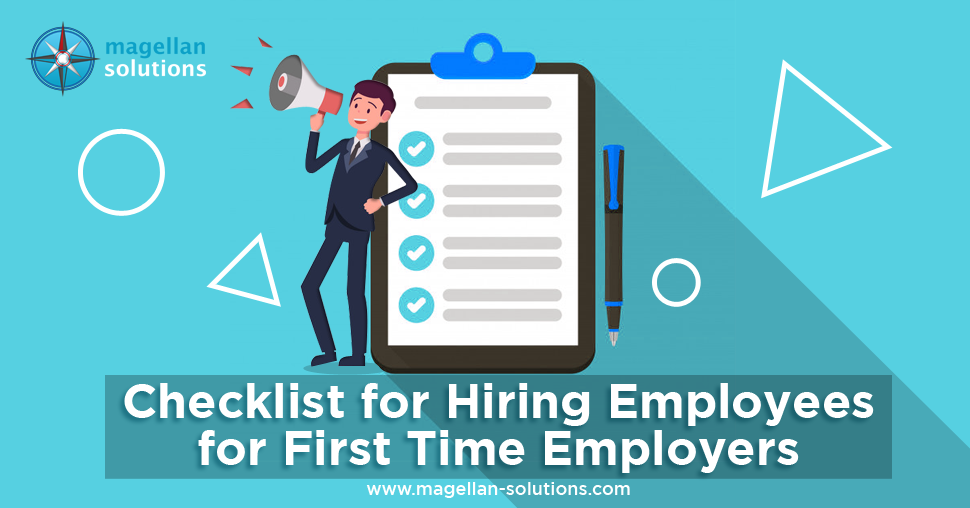Schedule a FREE call with our outsourcing expert now and get a precise quotation that meets your requirements. Don't wait - get started today!
Hiring your first employee is a big milestone for growing companies. However, understanding how to recruit talent can be confusing for new employers. Our “Checklist for Hiring Employees” can help guide you.
We help you with the essential steps to ensure successful talent acquisition before hiring. Identify key positions for rapid growth. Create appealing job descriptions to attract the best candidates. Implement screening methods to find the perfect fit. Improve the onboarding process for long-term, successful employees.
Imagine leading a carefully selected team that shares your vision and works together seamlessly, each member utilizing their unique strengths. Proper talent acquisition can reveal immense potential in this collective effort.
Follow our guide for a smooth hiring process and motivated teams that challenge the status quo daily. Begin building the foundation for future success now. Are you prepared to elevate your team’s potential to an exceptional level? Keep reading!
Your Essential Checklist for Hiring Employees Guide
Start your journey to building your dream team with our hiring an employee checklist. Let us help you navigate compliance issues and create a thriving workplace for your team. Read along!
1. Understanding Local Compliance Nuances
Master the Compliance Playbook: Before starting the hiring process, you must understand the specific hiring regulations in your area, including labor codes and tax policies. Identify the governing agencies and learn the legal requirements employers must follow in your region.
Navigate the Regulatory Landscape: To operate legally, complete all required business registrations and memberships. Adhering to local regulations is essential for establishing a strong legal foundation and protecting your talent acquisition process from penalties.
Internalize Compliance Intricacies: To avoid penalties, understand local compliance thoroughly. Taking a proactive approach and fully grasping the legal requirements can minimize the risk of compliance issues.
Construct a Sturdy Legal Foundation: Using this knowledge, create a strong legal framework that promotes ethical hiring practices. This will protect your business and establish a reputation for integrity in your recruitment efforts.
2. Foundational HR Processes
Formalize Your Employer Status: Once legal requirements are met, formalize your employment status by working with HR and payroll to integrate with local tax laws. Taking this proactive step will prevent issues and ensure smooth financial operations.
Draft the Quintessential Employee Handbook: The next important step is creating a comprehensive employee handbook. This document goes beyond just listing rules; it outlines your company’s values, behavior expectations, and operational policies. Giving this guide to new employees helps them understand your company culture and know what is expected of them.
Prioritize HR Groundwork: Investing time and effort into prioritizing HR groundwork pays dividends by creating a legally compliant, financially organized, and culturally cohesive workplace. This strong foundation sets the stage for a successful and sustainable talent acquisition journey.
3. Defining Roles and Responsibilities
Now for the fun part – sculpting dream job roles! But even fantasies demand specifics.
Clearly outline the must-haves for each position:
- Responsibilities
- Skill sets
- Experience levels
- Qualifications
Translate organizational needs into job descriptions. Advertise openings, articulate priorities, and assess how candidates’ backgrounds map accordingly. The proof lies in precise role definitions – they focus searches, align mutually beneficial hire matches, and assemble cohesive teams.
So embrace the significant task of outlining the building blocks of productive squads – your future ensemble cast awaits!
3. Effective Sourcing Strategies
In our checklist for hiring employees, the key focus is effective candidate sourcing.
Identify hiring needs
- What roles need to be filled?
- What skills and competencies are required?
- What values align with company culture?
Develop sourcing strategy
- Determine best sources for finding qualified candidates (job boards, social media, employee referrals, etc.)
- Prioritize diversity in sourcing
- Set goals for the number of candidates to source
Create or update your online presence
- Ensure the careers page and job listings are up-to-date and optimized for search
- Use employee networks on LinkedIn and other platforms
- Use targeted social media advertising, if appropriate
Tap into networks
- Ask current employees for referrals
- Connect with recruiters and hiring agencies
- Attend industry events, conferences, and meetups
Use proactive sourcing approaches
- Search CV databases and candidate profiles on key sites
- Reach out directly to potential candidates through email/InMail
Track and measure
- Record the number of candidates successfully sourced
- Note the source of each candidate
- Assess the diversity of the candidate pool
- Refine approach as needed
4. Streamlining the Application and Screening Process
In our checklist for hiring employees,” application and screening processes create critical first impressions for candidates.
To attract top talent:
- Design simple, user-friendly application interfaces that impress candidates.
- Streamline applications by only requesting information essential for evaluating qualifications.
- Develop targeted screening criteria that map competencies to role priorities, enabling qualified shortlists.
- Craft thoughtful processes that engage qualified applicants while optimizing recruiting team bandwidth.
5. Conducting Interviews
Preparation is Crucial: Spotlighting Interviews in Our Hiring Checklist
Meticulous interview preparation is pivotal. Craft a format assessing both
- Technical prowess
- Behavioral competencies
Holistic Assessment: Embracing Multi-Dimensional Interviews
Understand the whole candidate and their organizational fit. Look beyond skills. Assess the following:
- Cultural fit
- Values alignment
- Adaptability to the organization
Invest in Interviewer Training: Elevate the interview experience by investing in the training of your interviewers. This strategic move ensures a fair and consistent evaluation across candidates. It aligns interviewers with the cultural fabric that defines your company.
6. Reference Checks and Background Verification
Advancing in the “Checklist for Hiring Employees,” thorough reference and background checks verify candidate integrity. It offers insights into workplace behaviors and reliability. These assessments ensure that potential hires align with your organizational values.
Due Diligence Unveiled: Reference checks and background verifications emerge as the vigilant guardians of quality hires.
Validating puzzle pieces: Thorough reference checks validate candidates’ qualifications, providing insights into their past performance and work ethic, which greatly inform the hiring decision.
Integrity Checkpoint: Background checks serve as an integrity checkpoint in the hiring process, ensuring the reliability and integrity of potential hires and assessing how well they align with organizational values.
7. Offering and Onboarding
Transparent Job Offers: Craft job offers that provide a clear overview of the role, responsibilities, and expectations, promoting transparency in the employment journey.
Professionalism in Communication: It is important to maintain professional and open communication. Promptly addressing any questions or concerns and fostering clear lines of communication will help build trust with the new hire.
Seamless Onboarding Process: Streamline the onboarding process by providing essential information about organizational policies, workspace logistics, and initial tasks, which will help ease the new employee into their role.
Cultural Integration: Introduce new hires to the company’s values, mission, and work culture from day one to foster a shared sense of purpose and commitment.
Personalized Welcome: Personalize the onboarding experience by warmly welcoming new employees and introducing them to their team members. This will make them feel valued and appreciated from the start.
Continuous Support: Provide ongoing support through mentorship programs or buddy systems to help new hires navigate their roles with confidence and competence.
8. Employee Engagement and Retention
As we wrap up our “Checklist for Hiring Employees,” we shift smoothly to the crucial aspects of employee engagement and retention.
Cultivating Positivity: Establish an inclusive, collaborative culture that catalyzes engagement.
Beyond Perks: Focus on intrinsic motivators like purpose and growth to anchor employees.
Inclusive and Motivating: Foster a culture where employees feel valued and motivated through belonging.
Growth Opportunities: Provide professional development avenues for employees to evolve continually.
Recognize and Appreciate: Boost morale through simple appreciation and recognition.
Ongoing Feedback: Facilitate transparent communication and continuous improvement.
Unlock Success with Our Expert Checklist for Hiring Employees
Magellan Solutions checklist for hiring a new employee navigates recruitment complexities through
- Legal compliance,
- Foundational HR processes,
- Effective hiring strategies
The employee hiring checklist covers crafting precise role definitions, sourcing robust and diverse candidate pools, streamlining application screening, conducting structured interviews, thoroughly validating candidates, seamless onboarding, and nurturing employee satisfaction.
Follow this step-by-step guide for robust candidate pools, thorough evaluations, and reduced hiring risks. Enable positive work environments where new hires thrive.
We understand the complexities and challenges of recruitment. This comprehensive checklist supports strategic hiring success.
Need hiring help? Our team is ready to assist you! Contact us for a seamless and successful hiring journey tailored to your needs. This checklist is more than a guide; it invites us to collaborate for hiring success.

















